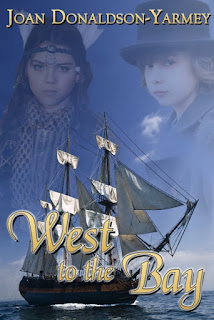 |
| WINNER Best Young Adult Book 2016, The Twisted Climb |
Well, prepare for the onslaught.
I had a fantastic summer, thank-you-very-much, and I'll show you just how fantastic it was.
Brace yourself.
 |
| Deer everyday at our campsite, Killbear Provincial Park, Parry Sound, Ontario |
There were no bears this year at Killbear - surprise! But deer came to forage behind our site three times a day, bringing fawn and even 8-point daddy.
 |
| Posing with my sister-in-law on her super-fast Hobie Cat. |
Before and after the storm pics, Georgian Bay.
Gah - there are more pics - the visual punishment continues....
Below are pics from my sailing vacation throughout Georgian Bay and the North Channel (Ontario) - rated one of the best sailing destinations in the world. The waters are clean and Caribbean-clear. Stunning. Me and my partner, Ian, sail a beautiful Catalina 36 named Escape Route II.
 |
| Anchored off Hope Island, Georgian Bay. |
 |
| Escape Route II, at anchor in Covered Portage Cove near Killarney, Ontario |
 |
| Delicious pike caught in Baie Fine, close to The Pool anchorage and Lake Topaz. |
At anchor in The Pool. The quartz mountains around Killarney are the breathtaking backdrop.
Overlooking Baie Fine and McGregor Bay. At the top of this 500m climb are the ashes of Stuart Fraser Cork, one of the famous Group of Seven painters. This was one of his favourite painting perches.
Posing with the coolest blow-up duckie in Killarney :)
At the Benjamin Islands, North Channel. Note the 'crooked' trees. They grow that way, adjusting to the prevailing northwest winds. These trees are often part of the Group of Seven paintings.
The pain is almost over......
Me and my captain, Ian.
Well, that's it for my eyeball punishment to you. If you made it this far - thank you!
I'm getting ready for three book signings in October so if you're in the Greater Toronto Area - come see me!
Toronto Eaton Centre, Indigo: October 14
Oshawa Indigo: October 21
Barrie Chapters: October 28
J.C.
Kavanagh
The
Twisted Climb
A novel
for teens, young adults and adults young at heart.
WINNER:
Best Young Adult Book 2016, P&E Readers’ Award
Twitter
@JCKavanagh1 (Author J.C. Kavanagh)











































.jpg)
